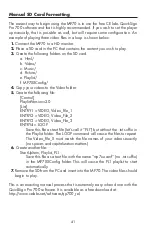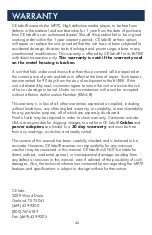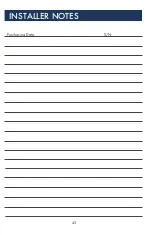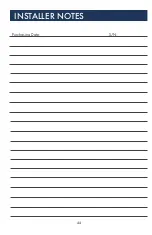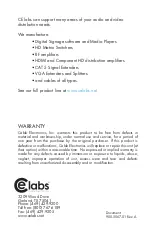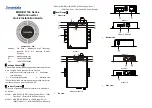
40
Browser Layer Design Guidelines
1.
This browser is standards-compliant and should correctly interpret all but
most exotic CSS and JavaScript syntax.
2.
Try keeping the total uncompressed size of images including those that are
not visible at the moment, or downloaded using JavaScript under 2 MB.
Avoid complicated page structures (deeply nested tables, etc.), and keep
formatting simple.
3.
Avoid resizing images in HTML, CSS or JavaScript by specifying width and
height. This will increase memory usage. Specifying width/height is OK
only if the dimensions are exactly equal to the natural dimensions of
the image.
4.
When designing dynamic effects, keep in mind performance limitations.
We found that moving large bitmaps or text across the screen (marquee) is
either slow/not smooth. However, image and text rotators seem to work fine.
5.
When manipulating objects (especially images) in JavaScript, release the
buffer (MyImg.src=””) or make sure that the object goes out of scope when
no longer needed. Some techniques, like preloading images one at a time
in image rotators shortly before use, and releasing shortly afterwards may
be helpful.
6.
When developing playlists, allow enough time to load websites, especially
when video is being played concurrently. When navigating from a web
page to another web page, allow some time for the previous page to
unload. For large, complicated pages both loading and unloading may
take several seconds each. Recommended time between page changes is
10 minutes depending on the complexity of the page being displayed.
7.
Page dimensions should not exceed displayed dimensions (typically
1366x768, 1024x768, etc).
8.
Pages should be developed specifically for the MP70 family as the browser
limitations make displaying generic web pages unpredictable.
9.
When using active JavaScript, try not to change to other pages. As the
JavaScript is running and is asynchronous to running playlists, information
may be loaded/unloaded at any time; therefore, a playlist should not
change the actively displayed web page. This can however be handled in
the JavaScript since it controls loading/unloading of objects, etc.
10.
When using a multilayer display, video bandwidth needs to be reduced.
The recommendation currently is MPEG-2 MP@HL running at 20Mbps
or lower.
11.
Avoid using H.264 in layering mode. The Memory bandwidth required to
process H.264 HD is very high and causes memory limitations for other
intense applications such as the Browser to function correctly.
12.
When spawning a Video, or picture from the Browser JavaScript always
use “?internal=1” as an option in the video execution line.
13.
Macromedia Flash is not supported.
















